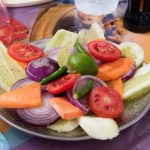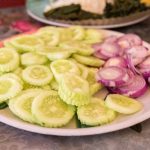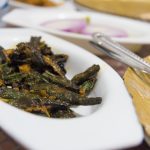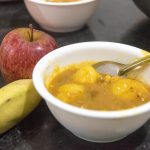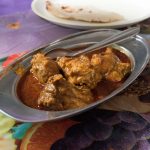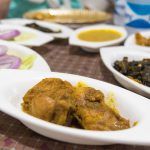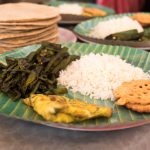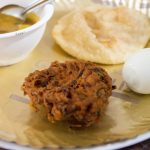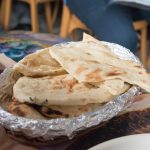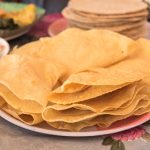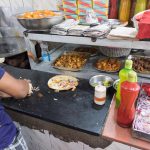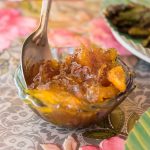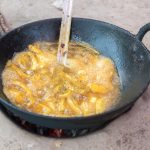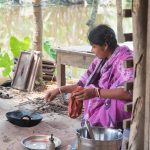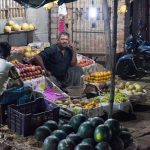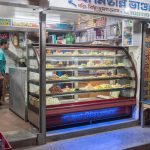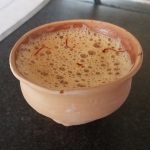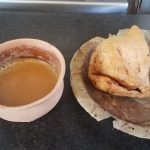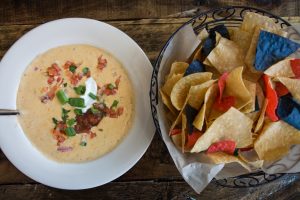There may be no food more misunderstood in the United States than Indian food. This is largely because of Indian restaurants that have been forced to “Americanize” their cuisine, streamlining a dizzying variety of dish types and cultures into a menu of “curries” for western palettes (Note: that’s probably not curry you’ve been eating). Even so, many Indian restaurants in the U.S. have done an admirable job serving up a fair representation of what you would find around Kolkata and Delhi.
The truth is, it would be impossible to fully show off what India is capable of in one restaurant. In India, food varies wildly from region to region, town to town, village to village, and even house to house. It is a hyper-local cuisine; while many of the cooking techniques are similar around the country, the ingredients that go into the dishes depend largely on what is immediately available. I recently spent six days in the region south of Kolkata in Eastern India, and came away overwhelmed by what the country had to offer.
Fresh produce abounds
Typically, the last thing an American would think of when talking about Indian food is fresh fruits and vegetables. However, produce reigns supreme in the country. India is largely a very poor nation, both in the cities and the rural areas. But outside of the major urban centers, the vast majority of people grow their own food or buy it from the markets. At one home I visited, a hungry child climbed up a banana tree, grabbed one and went happily on his way.
So it shouldn’t have surprised me that fresh produce was served at every meal I ate, whether at a restaurant or at a private home. Every meal saw a large plate of raw cucumbers, red onions and limes passed around the table. At restaurants, bell peppers, chiles and carrots typically were added as well. Breakfast usually had apples and a smaller variety of banana that was more dense and sweeter than what we’re used to here.
And of course, many vegetables made their way into the cooked dishes as well. Potatoes are ubiquitous in India; I spent many mornings watching bags of potatoes come to market by the ton. It’s a slightly larger and creamier version of the Yukon gold that was most common in the state of West Bengal, and it went exceptionally well with a strong, spicy gravy and a plate of rice. Okra, called bhindi, was extremely common and prepared wonderfully everywhere I went. Whether stewed or cooked in a tandoor, I didn’t have a single taste of the slime that can easily ruin okra if not prepared perfectly. It was also common to see grapes, papayas, mangoes, ginger root and even pomegranate sold in market stalls around the region.
Chicken, chicken and more chicken
Initially, I thought the stunning amount of chicken served to me on the trip was because I was an American and they didn’t want to expose me to more exotic proteins. But no, I was assured chicken is by far the most common meat consumed in India, and it makes sense. Cows are considered sacred in Hinduism, the dominant religion of the country, so beef is extremely rare. Goat is more common, but also more expensive and more useful. Goats can clear away brush and help prepare land for farming, and are easy to maintain. But chickens are everywhere and one of the cheapest sources of protein.
And so, chicken was served almost every meal, usually in a gravy fortified with turmeric, coriander and other local spices. The actual heat varied from place to place; Indian food isn’t necessarily off-the-charts spicy every meal. In some places, the heat was barely detectable, and the hottest dish I tasted was still at the top of my range in terms of how hot I like my food. True, I’m sure I could have asked for more heat, but it was very enjoyable as it was.
Chicken is usually served bone(s) in, and the whole animal is used. It was sometimes difficult to tell what part of the chicken was being served (fortunately, India’s practice of eating with your hand instead of a fork made getting the meat off the bones easier). For the most part, chicken is simmered in a sauce to prepare it, though I did have it cooked in a tandoor and, once, deep-fried.
And of course, lots of chickens means lots of eggs. The most common way I saw eggs being prepared was boiled and served with a little salt. However, I learned that more involved techniques are sometimes used, including omelets, which are typically folded around green chiles. The omelet was one of the most enjoyable things I ate in India; the egg was laid earlier that morning and the fresh flavors were unmistakable.
It’s not just naan
Naan is the bread most widely associated with Indian food. Typically circular, flat and slightly puffed like a pita bread, naan is cooked in an extremely hot oven, or tandoor, until it’s cooked through with charred edges and a soft middle. It is found at every Indian restaurant in the U.S. that I’ve ever been to, largely due to its familiarity and inoffensiveness.
I had bread with almost every meal in India, and only once was I served naan. Indian breads are unique and vary by region. On this trip alone, I was served chapatti (an unleavened flatbread), paratha, (a whole-wheat flatbread layered with ghee), puri (a puffed bread), papadum (a thin, crispy bread, in this case made from lentils) and luchi (a flatbread deep-fried in ghee). Bread styles varied by location; homes in the same village prepared different types of bread from one another. I enjoyed all of them, but the papadum and puri really impressed me. I’ll be looking out for different breads at Indian restaurants from now on.
Mango magic
The state of West Bengal is mango country. The trees grow everywhere, both wild and cultivated, and mangoes are sold at every market in the state. When ripe, a fresh mango is sweet and slightly tart, with a semi-firm texture and a flavor that keeps you coming back for more. However, I was not in India for mango season. Well, not for ripe mangoes, anyway.
In April, the mangoes are just starting to grow. Green, hard and barely the size of a baseball, they don’t look like anything I would ever use in cooking. But thank goodness it wasn’t up to me, because these green mangoes were the base of one of the best bites of food of my life. In almost every home, I watched women slice the young mangoes, cook them in sunflower oil and turmeric, add cane sugar and water, and let them reduce for up to an hour until thick as jelly. The result was the most beautiful sour chutney I’ve ever encountered, with just enough earthy notes from the turmeric to keep you from puckering. It was served as a dessert. I wanted it for every course of every meal. This is a recipe born out of necessity; if a young mango falls from a tree, you don’t just waste it. It’s a dish that has been passed down for decades and centuries, one that is truly authentic to the people of India. Food like this is what I had been looking for when I first decided to travel across the world.
The night market of Raidighi
I stayed in Raidighi during my trip, a small town of 20,000 people just minutes from the Bay of Bengal. The town only slept from 11 p.m. until 5 a.m.; otherwise, it was packed and bustling. Vendors lined the road selling everything from food to clothes to toys and electronics. Horns start honking before the sun comes up and continue until the last person goes to bed. It was a town where almost everybody knew everybody else (so I stood out like a sore thumb, of course).
But it was at night that the markets truly came to life. Street food vendors would prepare fried rice, sugarcane juice and all sorts of delicious-smelling food right in front of you. The markets were also busy, with people haggling over the price of grapes and loading up impossibly full bags of potatoes onto the backs of bicycles. The sounds and smells were disconcerting and amazing, with something new to experience every step.
Sadly, India’s water sanitation problem meant I couldn’t partake in many things Raidighi had to offer. India’s water supply is notoriously tainted, and even brushing your teeth with the water can lead to a violent illness that lasts up to a week. And while cooked foods are fine, when the tools and dishes are soaked in the water beforehand, it means you have to pass on a lot.
Thankfully, though, I was able to stop at one of the bakeries for some gulab jamun and some decorative nankhatai. Gulab jamun is almost like an Indian donut hole. It’s made from milk solids that are rolled in flour and deep fried. The ones I tried were rich and sweet, with a center of honey syrup and rose water that popped with every bite. Nankhati is a shortbread cookie, and while bakers prepare them in many eye-catching ways, they typically taste as you would expect a lightly sweet shortbread to taste. Although I didn’t get to go all in on Raidighi’s food scene, getting to sample these sweets was a fitting substitute.
A final bite
Of course, I was still bummed at getting an edited version of Indian food for my trip. Don’t get me wrong, what I had was outstanding, but what I didn’t get to try was tantalizing. Then, on the way back to the airport, my translator had the driver pull over to a roadside stand where the owner used clean water in his preparation. And so it was, sitting on a barstool at a Kolkata stall, my professional camera tucked into my luggage, that I got that last experience I came for. A masala tea was served in an earthen cup that the business made by hand every day. Touched with saffron and steamed milk, the strong tea made my eyes briefly close in bliss. An accompanying samosa, stuffed with potatoes, raisins and almonds, brought the true Indian spiciness and depth that I’d hoped to enjoy. The meal ended with a jalebi, which is essentially an Indian funnel cake soaked in sugarcane syrup. It made me think of Arkansas, and going back home. And believe me, I’m glad I’m back. But in that moment, sipping on a saffron masala tea and enjoying the perfect samosa, I briefly entertained the notion of staying forever.


